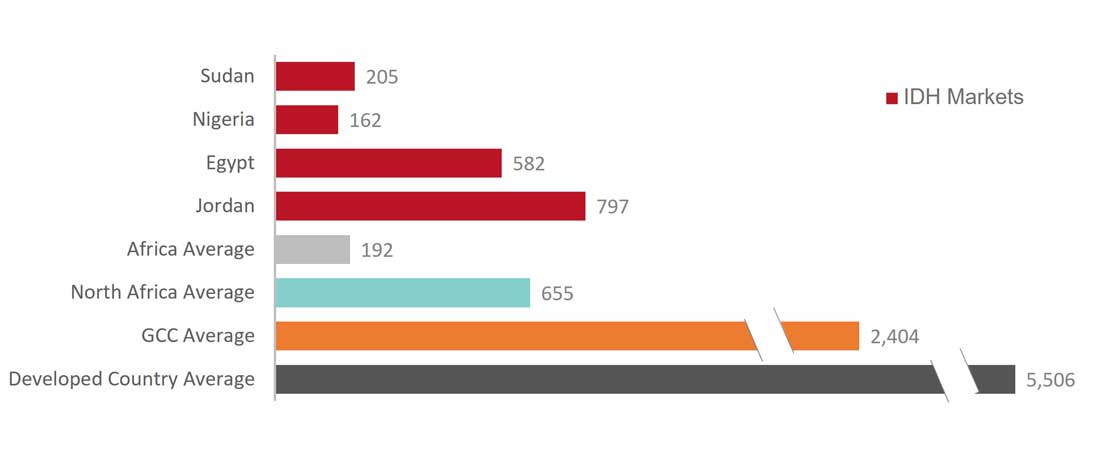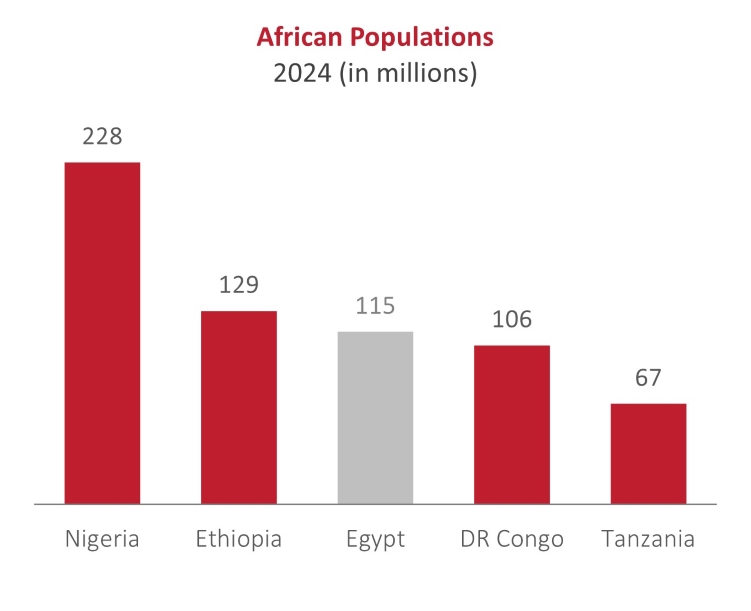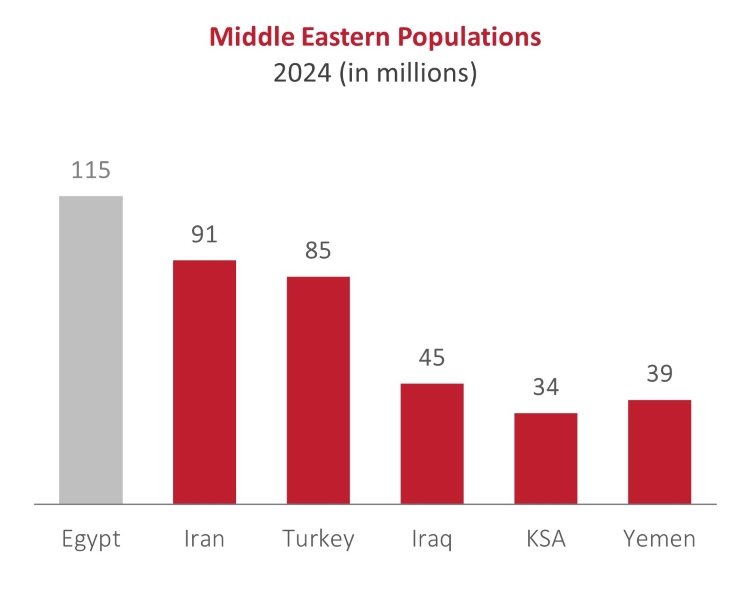
Favourable Industry Dynamics
Beyond the counter-cyclical nature of the healthcare industry, the highly-fragmented and underpenetrated nature of IDH’s Middle East and African markets create a growth opportunity for the Group.
There are powerful structural growth drivers in place that underpin a promising outlook for medical diagnostic services in these emerging regions, including: large, rapidly-growing populations; a high disease burden with an increasing prevalence of lifestyle-related medical conditions; and the heightened health consciousness of a rising middle class.
IDH is well positioned to capitalise on these favourable industry dynamics with strong brands, a large suite of high-quality medical diagnostic services; and an asset-light business model that enables a wide geographic reach.
HIGH FRAGMENTATION AND UNDER-PENETRATION
The health expenditures per-capita chart below demonstrates the underpenetrated nature of the regions in which IDH operates. The comparison shows the US and other developed countries outspending Middle Eastern and African countries by a very wide margin on healthcare. IDH’s “Hub, Spoke and Spike” business model enables the Company to expand organically in these highly-fragmented markets characterized by underserved demand for medical diagnostic services.
In Egypt, its largest market, IDH enjoys a 50%+ share of the private chain market segment of the Egyptian Diagnostics Industry as measured by revenues. The Group has a substantially larger footprint than its competitors, which are heavily concentrated in Cairo. Yet there is still substantial room to increase accessibility to lab services by adding branches nationwide for greater coverage of the population. Further, and as a testament to the strength of its brands, the Company is able to sustain higher pricing than its closest competitors.
Total Healthcare Expenditures Per Capita (2019) (2011 PPP* US$)

*PPP: Purchasing power parity is based on the assumption that the exchange rate between two currencies is equal to the ratio of the currencies’ respective purchasing power.
GCC: KSA, Kuwait, UAE, Qatar, Bahrain, Oman
North Africa: Morocco, Tunisia, Algeria
Africa: five most populous countries: Nigeria, Ethiopia, Egypt, DR Congo, Tanzania
Developed countries: USA, Japan, Russia, Italy, Germany, UK, France, Canada
Source: World Bank
Large populations
IDH has an established presence in two of Africa’s three largest countries in terms of population size. Across both Egypt and Nigeria, the population is expected to continue growing in the coming years in turn generating new demand for IDH’s services.
African Populations - 2024 (In Millions)

Middle Eastern Populations - 2024 (In Millions)

As of December 2024
Source: World Bank
High disease burden
Middle Eastern and African populations are marked by high disease burden, with high prevalence of communicable, non-communicable and tropical diseases. Whilst diseases such as malaria, tuberculosis and HIV/AIDS still predominate, the occurrence of lifestyle-related diseases is on the rise, in particular in the developing world. According to the World Health Organization (WHO), non-communicable diseases (NCDs) account for c. 74% of deaths worldwide each year, 77% of which are from low- and middle-income countries.
Source: World Health Organization, International Diabetes Federation, and Frontiers in Public Health
Heightened health consciousness
The underserved and under-resourced healthcare systems in the Middle Eastern and African regions in which IDH operates have reached a critical inflection point. Serious issues include lack of funding, inefficient management, shortage of facilities and lack of qualified medical practitioners.
As the Group’s emerging markets grow, demand for more and better health options will be driven by an emerging middle class. These consumers are increasingly health conscious — they exercise more, chose more nutritious foods and expect access to modern and preventive healthcare.
